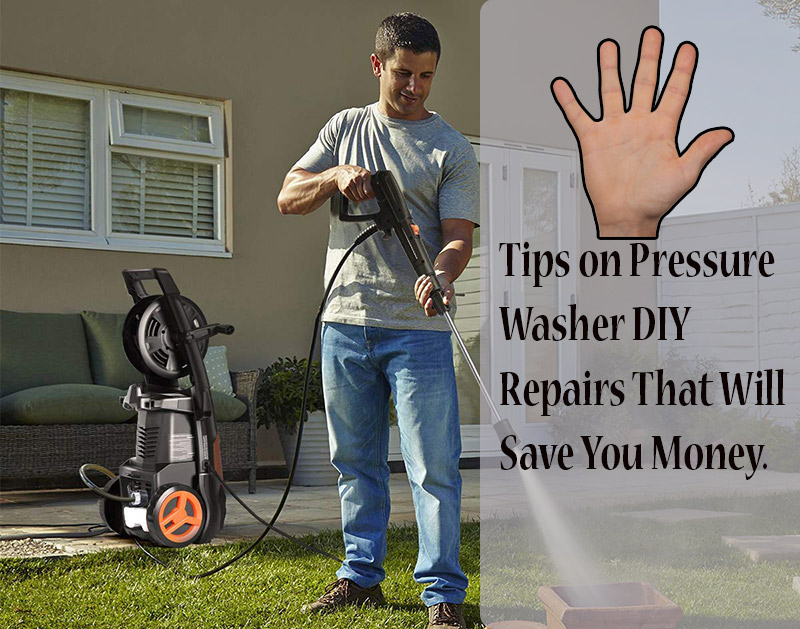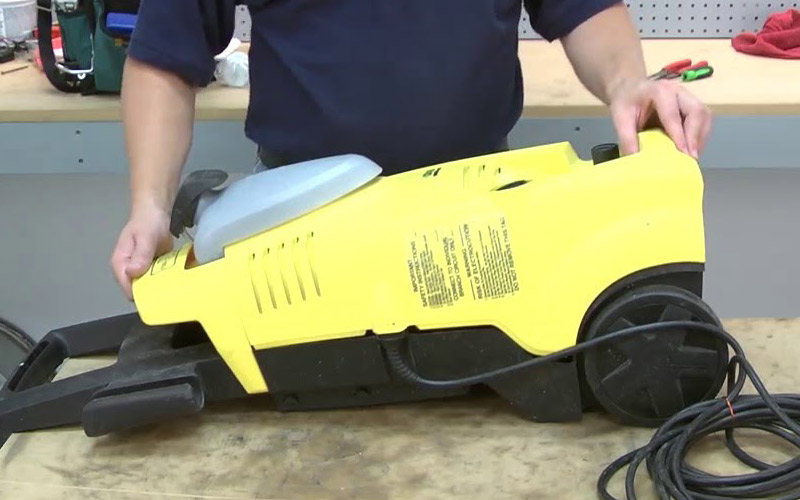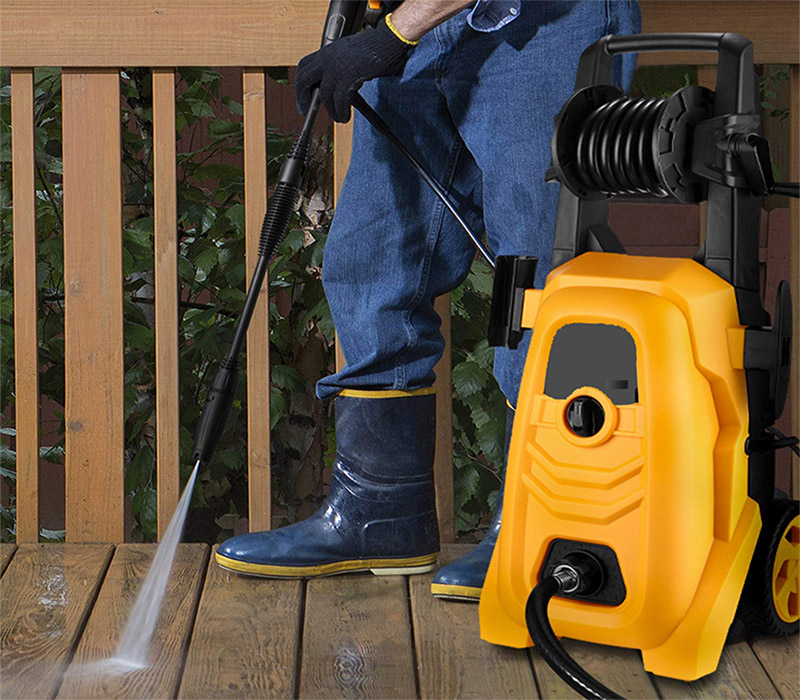
Are you a prospective or new pressure washer owner, and you’re worried about repair expenses? Or have you’ve spent a bit of money in the past on fixing minor pressure washer problems? When you’re using your washer, and it starts acting up, it’s a frustrating experience knowing that you won’t successfully clean your items.
Maybe you’re even thinking that it would be cheaper to rent a washer or hire a professional for the job instead. It’s more expensive and inconvenient, too. Most pressure washer owners don’t know that they can easily fix common washer problems without spending a dime.
Table of Contents
Why Would a Pressure Washer Need Repairs?

Just like with several other kinds of equipment, occasionally, you will face problems while using your pressure washer. Some problems are minor, while others require a bit more work to repair. Your pressure washer will need repairs for these problems:
1. Low Water Pressure
For an efficient and effective cleaning job, you want a high-pressure, direct stream of water. The common culprits of this problem are blockages and kinks in the hose.
2. No Water Pressure
This problem is just as frustrating as low pressure. Before you call in an expert and spend lots of money, check out your hose.
3. Leaking Pressure Washer (Water Or Oil)
Water and oil leakages are common problems with pressure washers, especially if you use it frequently.
- Pressure washer starts then stops
The common cause of this is a dirty valve or inlet
- Pressure washer shuts off suddenly
Don’t be alarmed at this problem. First, check if you have enough fuel and oil. Other pressure washer problems:
- Pulsating pressure washer
- Pressure washer can’t start at all
- Pressure washer can’t shut off
- Detergent injector not working
- The Pressure washer is not cleaning the surface properly
- A pressure washer makes excessive noise
Can You Do Repairs to a Pressure Washer Yourself?

Of course, you can. Most common pressure washer issues don’t require professional intervention. However, you can’t fix ALL pressure washer problems yourself. Some issues require more specialized knowledge, replacing some parts or even replacing the washer itself. Here are five pressure washer DIY repair tips you can use that can save you money:
1. Disassemble and Clean/Remove Debris
When you experience low water pressure, the inlet water filter may be blocked. If you’ve been using your washer for a significant amount of time, debris is bound to build up. You’ll need to remove the garden hose connection and clear the debris to increase the pressure.
For no pressure and pulsating pressure problems, it’s likely to be an issue with the pump inlet valves. This will require you to disassemble the pump and clean the components of the inlet manifold.
2. Flush with Fresh Water
If your detergent/chemical injector is not working properly, try flushing it with fresh water. This will help to unclog the detergent tube inlet filter and allow soap to flow freely. An obstructed nozzle, spray wand, or water inlet filter will cause pulsing water pressure in your washer. Flush the water inlet and spray wand with fresh water and vinegar to remove any deposits.
3. Use the Correct Nozzle
The solution to your pressure washer problem may be as simple as using the correct nozzle. When the pressure is low, or the washer is not cleaning the surface properly, you’re probably using the wrong nozzle. After checking if your water supply is enough and you’ve ruled that out, change to a high-pressure spray nozzle for an effective cleaning job.
Nozzle tips are typically color-coded as follows:
- Red (0 degrees): its spray is like a pencil-point. It’s perfect for removing mud from surfaces at a distance.
- Yellow (15 degrees): this nozzle spray has a slight fan and can scrape off paint from a surface when you hold it at 45 degrees.
- Green (25 degrees): the fan pattern for this nozzle is wider and can remove debris from your driveway.
- White (40 degrees): with the widest fan spray pattern, this nozzle can wash car exteriors and glass surfaces.
If your chemical or soap is not dispensing out properly, your items will not get as clean as you want them. Use the black soap nozzle (chemical injector tip). It has a large opening with low pressure. The low pressure helps to spread the soap/chemicals easily onto your surface.

Author Bio:
David is a part of the Public Relations team over at ECM or East Coast Mechanical a family-owned air conditioning, plumbing, and electrical service business in South Florida.
